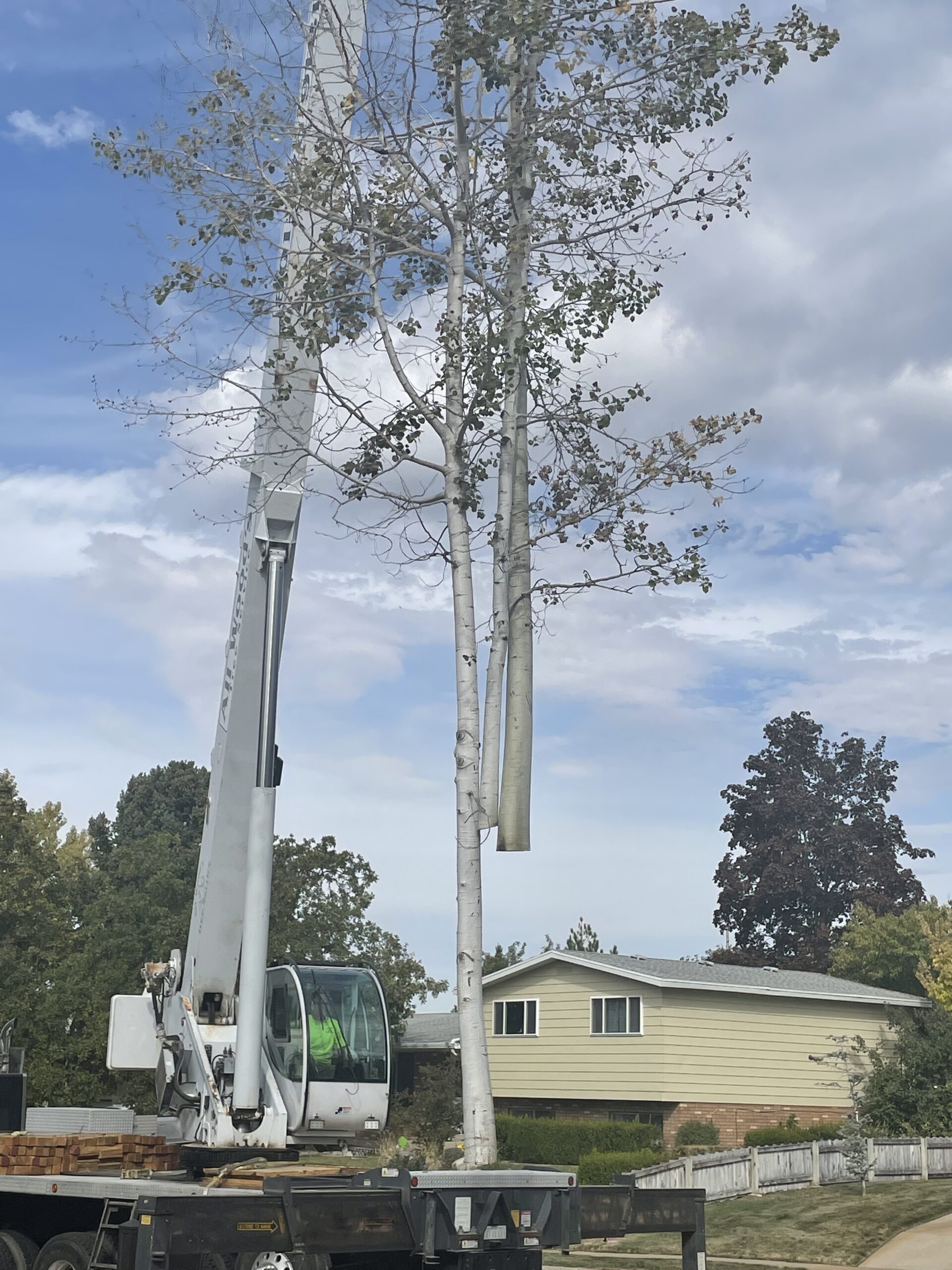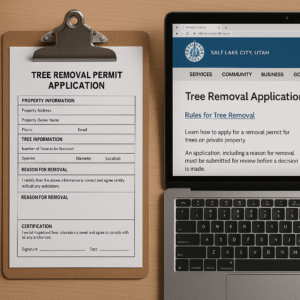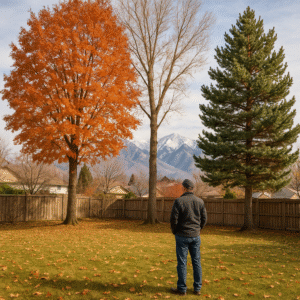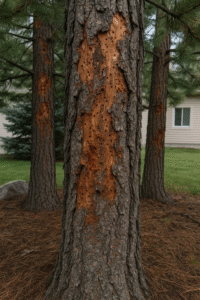Crane assisted tree removal requires careful planning with precise execution, particularly in environments where traditional methods pose risks to property or people. In Utah, we have a lot of oversized trees that can easily topple over with a significant windstorm. Due to intense moisture, the grounds can be saturated, causing a tree to fall over with a windstorm.
If you have a tree close to your home, we recommend tree trimming services to reduce the risk of branches falling on your house. Other types of trees require tree removal to prevent them from posing serious risks to the home.
How Does Crane Assisted Tree Removal Work?
The initial step involves a thorough site assessment to guarantee the crane can be safely positioned while minimizing impact on the surrounding area. This type of removal not only demands technical expertise in the handling and operation of heavy machinery but also a deep understanding of arboricultural principles to safeguard the health and safety of the tree species involved.
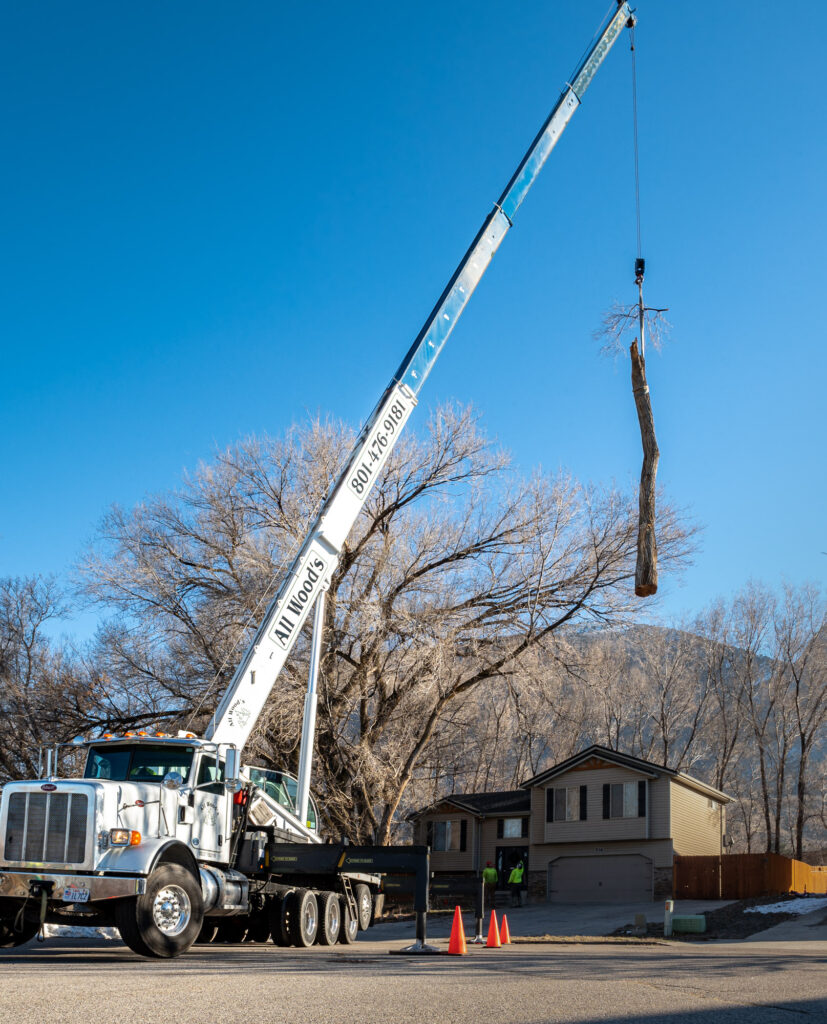
Assessing the Site for Crane Assisted Tree Removal
All Woods Tree Service crane assisted tree removal services will require a site assessment to identify the hazards and plan the operation. We will look for ways to minimize risk to personnel, equipment, and surrounding property.
Our evaluators must consider several factors such as the proximity to public thoroughfares, the presence of underground utilities, and the type of terrain. Accessibility for heavy equipment is essential; pathways must be evaluated to ensure that the crane can reach the site without obstruction. Adequate room for maneuvering and stabilization is key to maintaining safety throughout the operation.
The hazard evaluation includes a thorough analysis of the tree’s health and stability. Factors like disease, decay, and physical damage to the tree can significantly alter the dynamics of removal, necessitating specific precautions. Additionally, environmental conditions such as wind speed and soil stability must be assessed to adapt the removal strategy accordingly.
Preparing the Crane Tree Removal
Once the site assessment is complete, the next step involves preparing the crane and other necessary equipment for the tree removal operation.
- A thorough equipment maintenance check is imperative to operations. This includes inspecting the crane’s hydraulic systems, cables, hooks, and booms for any signs of wear or damage. It’s crucial to verify that all components are functioning at their best to handle the significant weight and stress during operation. Any discrepancies found during these checks must be addressed immediately to prevent potential hazards.
- Safety protocols are applied during equipment preparation. Operators must adhere to manufacturer guidelines and safety standards. This means ensuring that all safety devices on the crane are engaged and functional. Additionally, all rigging gear used for lifting the tree segments should be inspected for integrity and strength.
- The preparation phase also involves setting up the crane on stable ground to avoid any tipping incidents. Outriggers are deployed to stabilize the crane and the area is secured to ensure that only authorized personnel are within proximity during the operation.
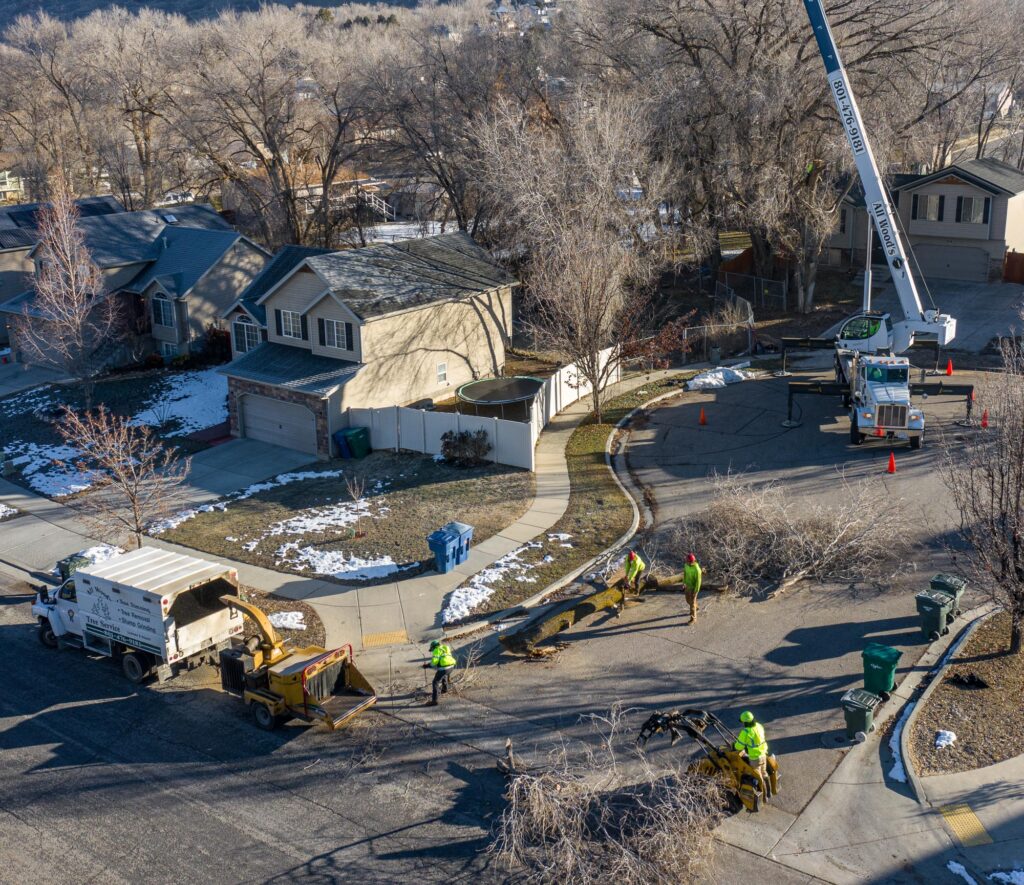
Securing the Tree for Removal
Once we have the crane in place for tree removal, we focus on the safety of our team. The tree’s health and structural integrity must be assessed to determine the best methods for securing it. Weak branches or diseased parts of the tree might affect how it should be secured or could indicate a higher risk of unpredictable movement during removal.
All Woods Tree Service will use slings, chokers, and sometimes even cradle systems depending on the size and complexity of the tree. Each point of attachment must be carefully chosen based on the tree’s anatomy and load distribution requirements. It’s essential that these attachments are placed in a manner that balances the load and prevents any undue stress on parts of the tree. This could lead to breakage or a dangerous shift in weight.
Our team also verifies that all securing gear is in excellent condition and appropriately rated for the weight and stresses involved in the task. Regular checks and balances, as part of the safety protocols, are executed to maintain the integrity of the securing process. This safeguards the tree, equipment, and personnel involved.
Operating the Crane for Tree Removal
Operating the crane involves coordination and precise control to guarantee the safe and efficient removal of the tree. The crane operator must verify proper crane positioning, which is vital for maintaining balance and stability throughout the operation. This involves selecting a level area that can support the weight of the crane and the load. The area should be free of overhead obstructions and sufficiently distant from electrical lines and other hazards.
Once the crane is positioned, the next essential step is load calculation. Accurate load calculation is necessary to prevent overloading the crane, which can lead to catastrophic failures. The crane operator must estimate the weight of each section of the tree to be removed. This involves understanding the species of the tree, which affects wood density, moisture content, and consequently the weight.
The crane’s lifting capacity must be compared with the calculated load to ensure it falls within safe operational limits. Each lift must be planned and executed with precision, using the crane’s load chart. This provides detailed information on the capacities at various angles and extensions.
Cleanup and Disposal of Trees
Following the removal of the tree, the next step involves the cleanup of debris and the proper disposal of the tree branches. Our workers gather all branches, leaves, and fragmented wood ensuring that the site is clear of hazards.
The disposal of the tree material is conducted with careful consideration of recycling options and adherence to legal regulations. Wood from the removed tree can often be recycled and repurposed into wood chips, mulch, or even lumber depending on its condition and size. This approach not only minimizes waste but also supports sustainability by providing resources for other uses.
Special permits may be required for the disposal of large quantities of organic waste and our professional crane assisted tree removal services adhere to these regulations.
If you need crane assisted tree removal services in Davis County, Weber County, or Salt Lake County, contact All Woods Tree Service today to get started!

